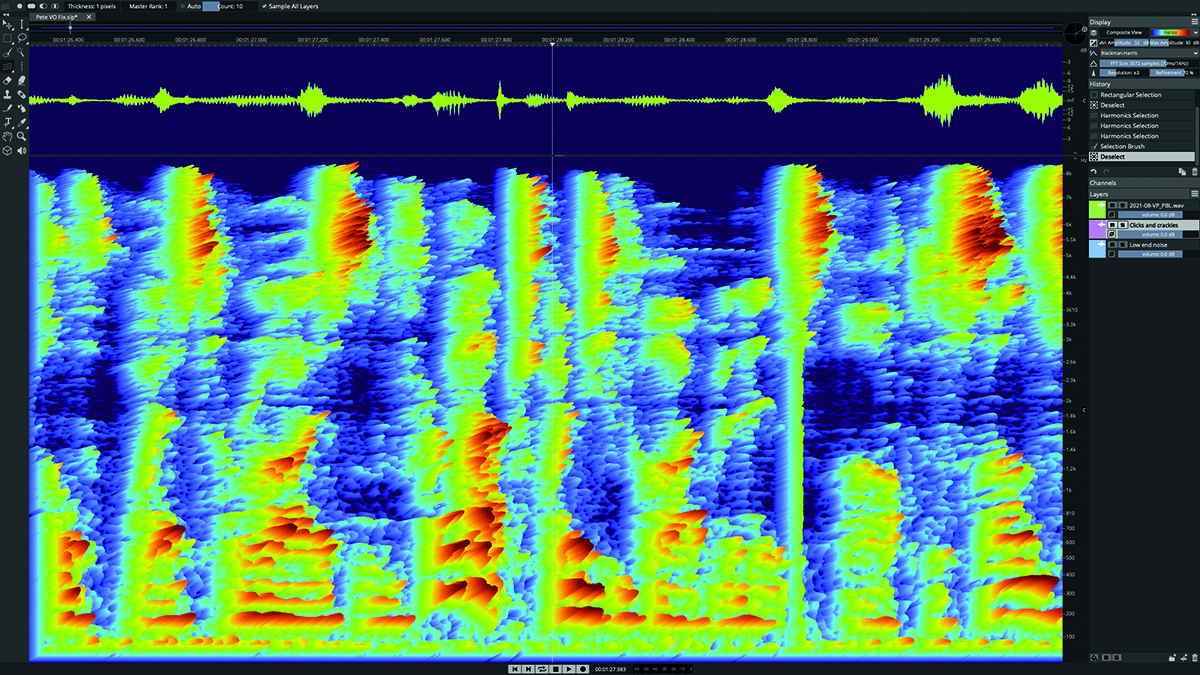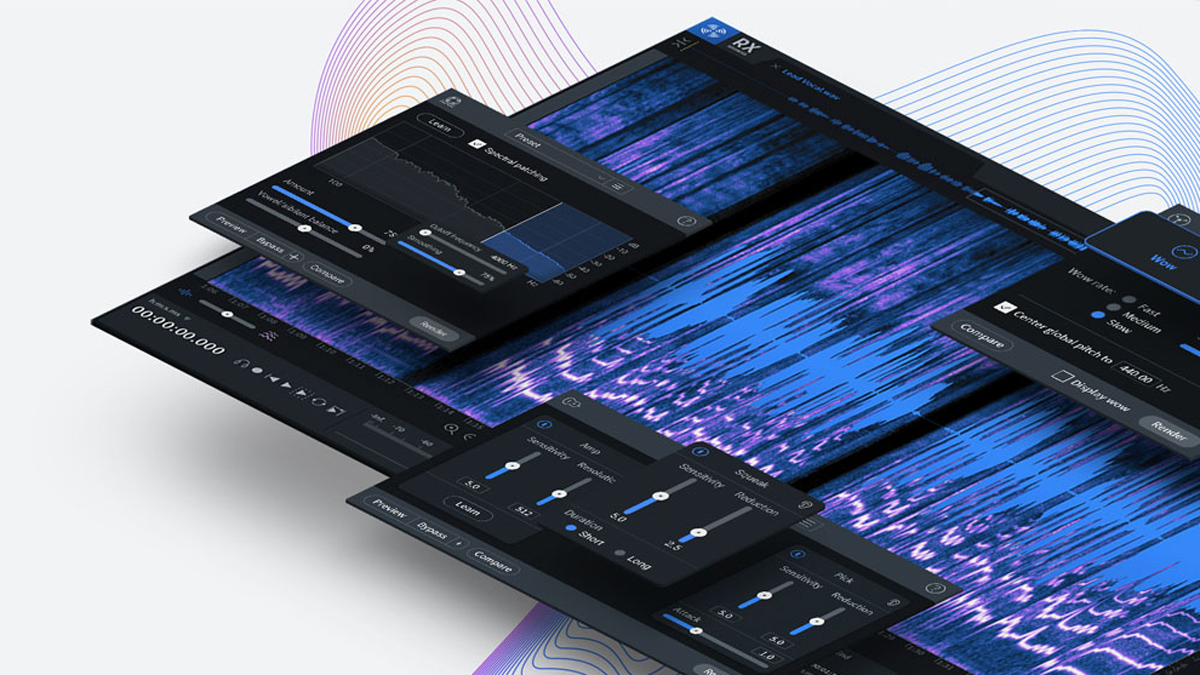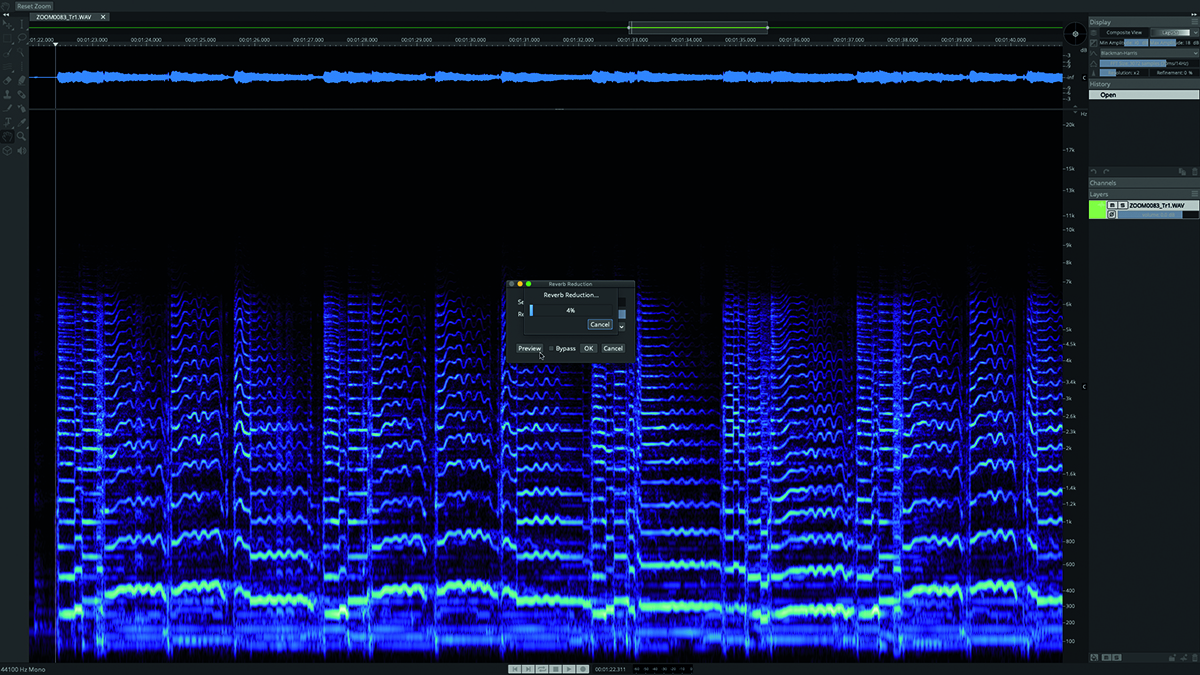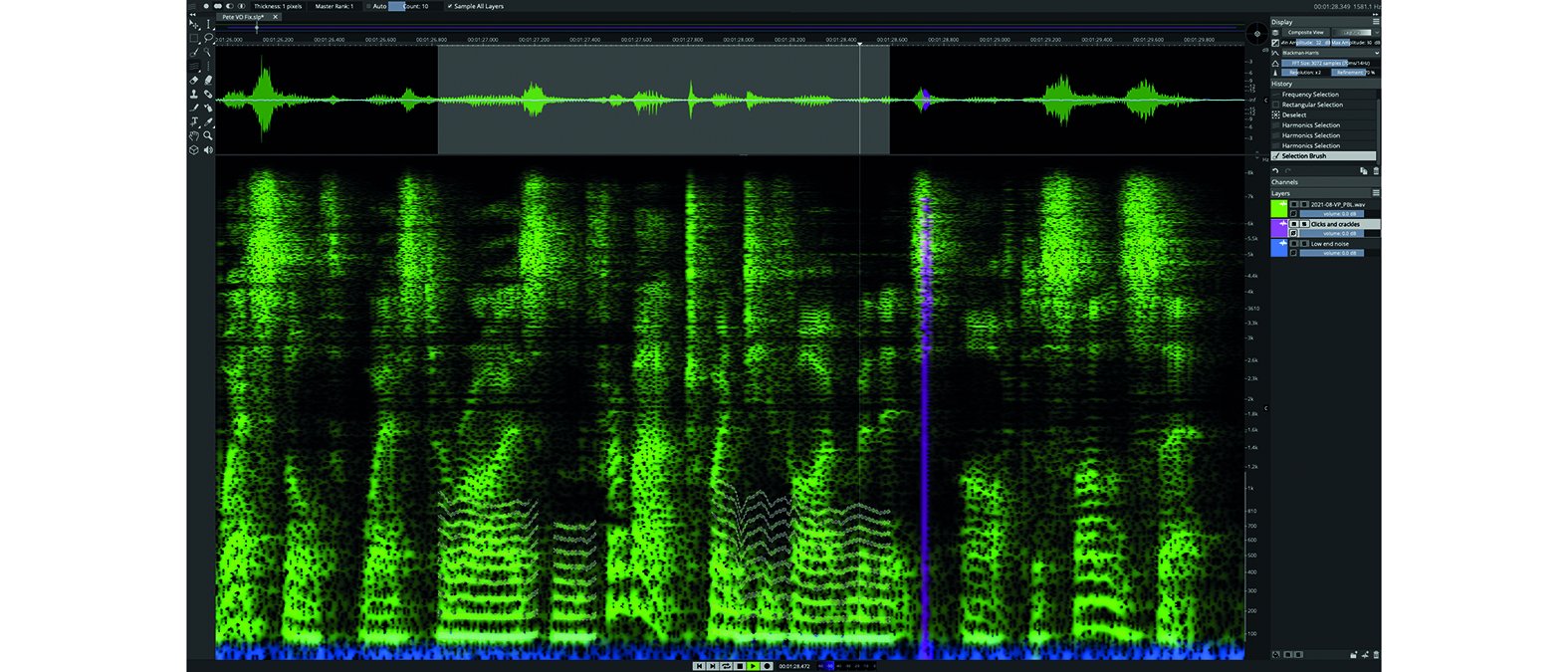MusicRadar Verdict
Steinberg has steadily improved SpectraLayers since acquiring it, a trend continued in this slick, capable release.
Pros
- +
Stunningly effective AI processes.
- +
High def spectrogram, colour modes.
- +
Quick, slick and stable in use.
- +
Improved ARA2 functionality.
Cons
- -
Offline processor setup windows need refinement.
- -
Product manual lacks full explanations.
MusicRadar's got your back
Steinberg SpectraLayers Pro 8: What is it?
The audio waveforms shown in DAWs and other audio tools map amplitude changes over time, which is easy for a computer to create and easy for a human to read. They say nothing about the frequency content within a sound, though. This is where spectral editors come in. These allow us to see the constantly-fluctuating frequencies within a passage of audio and, more importantly, they allow us to edit specific frequencies and frequency ranges. This makes spectral editors well-suited to corrective tasks, although they are also powerful sound design tools, and so these are the use-cases that Steinberg has focused on with its latest version of SpectraLayers.
SpectraLayers Pro 8 is Steinberg’s third iteration of the software (it’s changed hands a few times). The program can run in standalone mode or as an ARA2 plugin that integrates closely with your DAW, assuming your DAW supports ARA2 – most now do. The ARA2 support has been enhanced in this version so that a single DAW project can now host multiple SpectraLayers projects; in contrast to previous versions which would add DAW tracks as layers in a single SpectraLayers project.
The software also now supports sample rates of up to 384kHz, so will happily integrate into high-end music and film production workflows.

SpectraLayers’ Spectrograms
Most sounds, with the exception of sine waves, consist of different frequencies that vary in amplitude over time. The standard waveform graphs we’re familiar with show only two dimensions of this information: time and the overall amplitude of the signal. A spectrum analyser also shows only two dimensions, frequency and amplitude, but has no way to represent time. So, to represent how the different frequencies in a sound change and interact over time, a spectrogram of the sort used by SpectraLayers has to show all three dimensions of information – time, frequency and amplitude – in a two-dimensional graph.
To achieve this, SpectraLayers shows time in the X-axis, frequency in the Y-axis, and represents the amplitude of those frequencies as changes in brightness and/or colour, depending on the display mode. The resulting display shows bright bands of fundamental frequencies, an ever-darkening ladder of harmonic bands extending above those fundamentals, and speckled, chaotic areas that represent un-pitched noise and background. As an extra visualisation trick, SpectraLayers can shift into a quasi-3D view revealing comparative height (and amplitude) of the bands and colours in its spectrogram.
Steinberg SpectraLayers Pro 8: Performance and verdict
Despite being an audio editor, SpectraLayers borrows many concepts from the world of digital image editing, such as marquee selection tools, non-continuous selections and, of course, layers. These tools work very similarly to how they would in an image editor too, only instead of being used to select specific areas of a picture, SpectraLayers’ tools allow you to select specific time ranges of frequencies on a spectrogram. You can then work with these selections independently, without impacting on the rest of the sound.
For example, let’s say you had a recording that was marred by a nasty earth hum. You could use a high-pass filter to remove it, along with all other frequencies below the filter’s cutoff, or you could open it in SpectraLayers. Here the hum will be clearly visible as a bright, solid horizontal band running near the bottom of the spectrogram, and to remove it all you need do is draw a selection marquee around that band and hit delete, leaving all other frequencies unaffected.
Want all the hottest music and gear news, reviews, deals, features and more, direct to your inbox? Sign up here.
There are a number of intelligent tools that hugely speed up the spectral editing process
Alongside tools for creating simple rectangular, oval, point-to-point and freehand selections, there are a number of intelligent tools that hugely speed up the spectral editing process. For example, the Frequency selection tool automatically follows a varying frequency band as you drag the mouse across it, with the Harmonics selection tool working similarly but also selecting the harmonics of the main frequency you are selecting.
Layering in SpectraLayers works much as it would in an image editor too: use the selection tools to define areas of the spectrogram you’re interested in, and then cut these to a new layer where they can be edited in isolation. When played back, all unmuted layers are combined into the final audible output; you can also solo individual layers and adjust their volume level.

• iZotope RX8 Standard
With advanced audio correction and the ability to stack different processors, RX8 is a very popular spectral editor.
• SpectraLayers Elements 8
Many of the Pro edition’s tools and features, at a more attractive price.
SpectraLayers Pro 8 comes with a host of processing tools for common tasks like noise reduction and click repair. Some of these are based on conventional algorithms, but an increased number are now infused with AI technology, making them capable of some startling feats. For example, a few different tools make use of the ability to recognise the human voice, either to extract a vocal from mixed music, or to isolate a spoken voice from unwanted background noise. As a form of noise reduction, this is far more flexible than is conventional, and produces far fewer artefacts.
There are other new, improved AI-infused tools too. There’s an Ambience Matching process that helps to make different recordings sound like they exist in the same acoustic space, as well as an EQ Matching tool which is a huge time-saver when matching the tonality of different takes and recordings.
The fabulously useful De-Bleed process is ideal for isolating multi-miked drums or individual instrument mics, and the existing Reverb Reduction tool has had an AI overhaul to make it much more effective at identifying and controlling room resonances and other unwanted ambience. You can even break down an entire mixed recording into its constituent stems.

The only issue here is that the processor setup windows can be awkward to use. For starters, the purpose and/or effect of the parameters isn’t always clear, and the product manual often doesn’t help. There is a preview feature, but this must be pre-rendered, which can be slow, and that rendering isn’t stored in memory, so quick A/B comparisons with the bypassed processor are out. The parameter sliders themselves can also be clumsy to use.
The SpectraLayers that Steinberg originally acquired was capable, but could also be a bit clunky and, at times, crash-prone. As one would expect, Steinberg has been plugging away at these issues so that now, whilst looking almost identical to previous iterations, SpectraLayers feels slick, responsive and stable.
None of this has come at the expense of new features either, with the new and improved AI-infused processes capable of results that at times seem more akin to witchcraft than audio technology. So while not all workflows need one, if your workflow has a spectral editor shaped hole in it then SpectraLayers Pro 8 could fill it.
MusicRadar verdict: Steinberg has steadily improved SpectraLayers since acquiring it, a trend continued in this slick, capable release.
Steinberg SpectraLayers Pro 8: Hands-on demos
Steinberg
Music Tech Tuition
White Noise Studio
Steinberg SpectraLayers Pro 8: Specifications
- Software Type: Mastering
- Platform: Mac, PC
- Upgrade/Full: Full
- Download/Boxed: Download
- Bit Depth: 64-bit
- Format: AAX, VST3, AU, Standalone
- Hardware Requirements - Mac: Intel Core 2 Duo or higher, 4GB RAM minimum
- Hardware Requirements - PC: Intel Core 2 Duo / AMD Athlon 64 X2 or higher, 4GB RAM minimum
- OS Requirements - Mac: macOS 10.13.6 or later
- OS Requirements - PC: Windows 10 or later
- CONTACT: Steinberg
Computer Music magazine is the world’s best selling publication dedicated solely to making great music with your Mac or PC computer. Each issue it brings its lucky readers the best in cutting-edge tutorials, need-to-know, expert software reviews and even all the tools you actually need to make great music today, courtesy of our legendary CM Plugin Suite.





